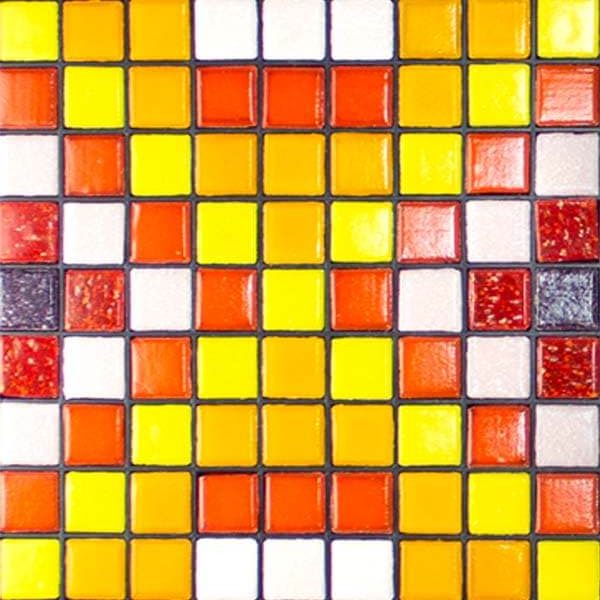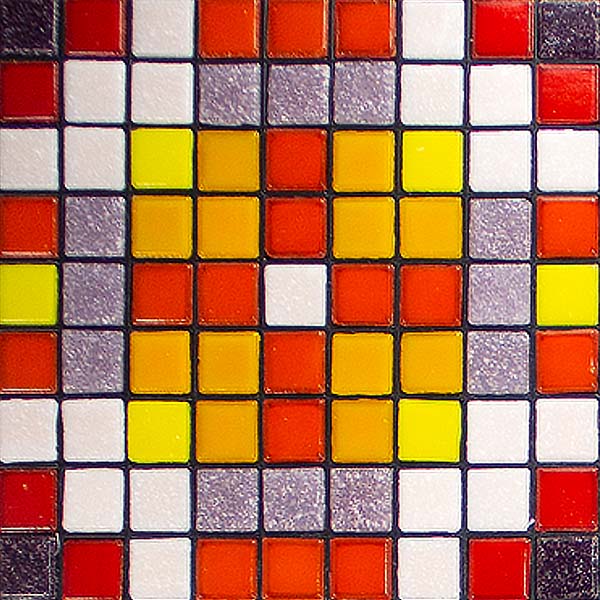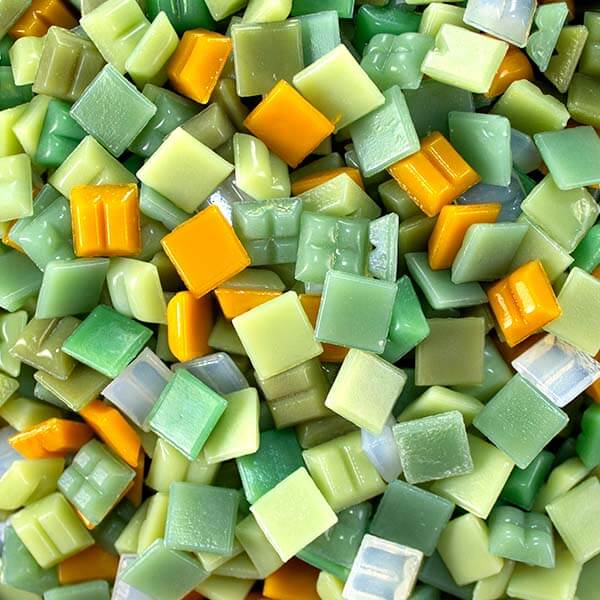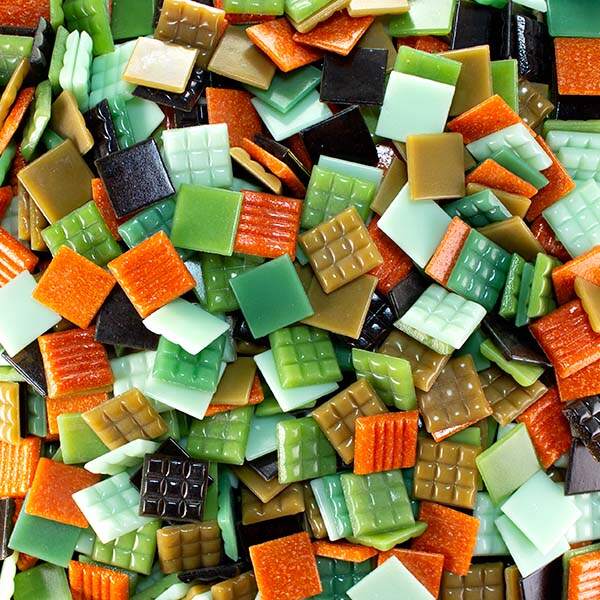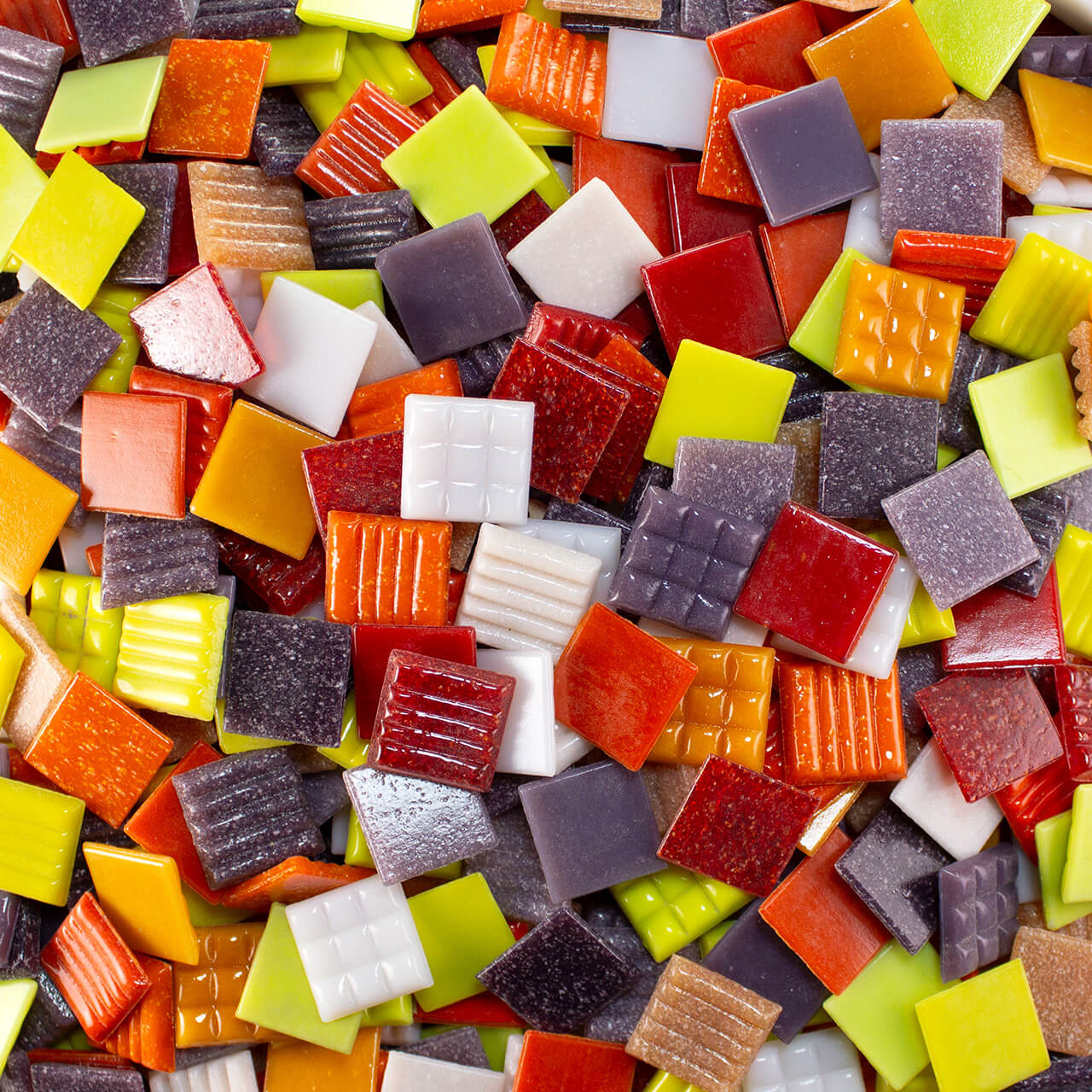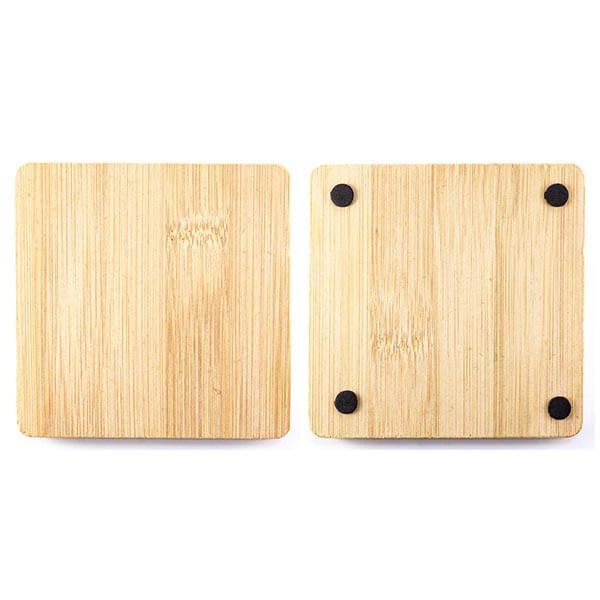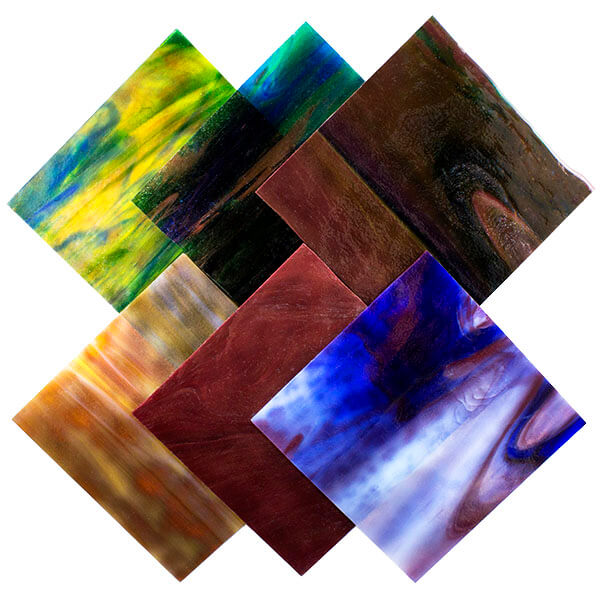
Youghiogheny Y96 Fusible Stained Glass stained glass is affordable and can be used in mosaic art or fusing and slumping projects with 96 COE glass. Our selection of solid colors is ideal for use in mosaic artwork on opaque backing surfaces. Made in the USA.
Y96 Fusible Stained Glass is sold in 6-inch sheets like the rest of our stained glass. Some sheets will have a rippled end along one side of the glass. The thickness is remarkably uniform at exactly 3 millimeters, which is about 1/8th of an inch.
COE 96
Y96 Fusible Stained Glass uses standard COE 96 fusing schedules available online.
The glass is tested using a dilatometer and examined with a polariscope to ensure it meets the set standard.
This glass can of course also be used in regular stained glass mosaic artwork. There is no requirement that it must be fired and fused; the glass is already beautiful.
Firing Schedule
The manufacturer specifies the following guidelines.
Full Fuse
• From room temp to 1000F at 300 degrees per hour, hold 10 minutes
• From 1000F to 1250F at 300 degrees per hour, hold 20 minutes
• From 1250F to 1425F at 300 degrees per hour, hold 15 minutes
• Crash from 1425F to 950F, hold 60 minutes
• From 950F to 800F at 200 degrees per hour, hold 10 minutes
• From 800F to 150F at 300 degrees per hour
• Natural cooling to room temperature
Please adjust hold times for the size of your project. Remember, this is only a guide.
Tack Fuse
• From room temp to 1000F at 300 degrees per hour, hold 10 minutes
• From 1000F to 1250F at 300 degrees per hour, hold 20 minutes
• From 1250F to 1350F at 300 degrees per hour, hold 10 minutes
• From 1350F to 950F AFAP, hold for 60 mins
• From 950F to 800F at 200 degrees per hour, hold 10 minutes
• From 800F to 150F at 300 degrees per hour
• Natural cooling to room temperature
Please adjust hold times for the size of your project. Remember, this is only a guide.
Slump Fuse
• From room temp to 1000F at 300 degrees per hour, hold 30 minutes
• From 1000F to 1225F**** at 200 degrees per hour, hold 10 minutes
• From 1225F**** to 950F fairly quickly, hold for 60 mins
• From 950F to 800F at 200 degrees per hour, hold 30 minutes
• From 800F to 150F at 300 degrees per hour
• Natural cooling to room temperature
Please adjust hold times for the size of your project. Remember, this is only a guide.
REQUIRES EYE CONTACT — REMEMBER THIS IS ONLY A GUIDE
Youghiogheny Fusible 96 COE Stained Glass Sheet 6-Inch
- STAINED GLASS VARIES IN COLOR AND PATTERN BY SHEET. Do not order if you cannot tolerate variation.
- Price is for one sheet of stained glass approximately 6 inch x 6 inch
- Sheets are cut by hand using a straight edge and are not always perfectly square.
- Sheets are cutting stock for making small mosaic tile and are not sold as finished mosaic tile.
- Thickness: 3 mm or 1/8th of an inch
- Pigments: colorfast metal oxide.
- APPARENT PIGMENT DENSITY, HUE, AND OPACITY MAY CHANGE IF FIRED
- Coverage: 1 sheet covers approximately 1/4 square feet.
- Cuts relatively easily with Mosaic Glass Cutters.
- frost proof
- impervious to liquids
- Suitable for indoor and outdoor installation.
- NOT suitable for floors. More fragile than glass tile.
Stained glass can be cut into small irregular tiles quickly and easily with our Mosaic Glass Cutter, but for long straight strips and square tiles and curved shapes, you can use the Pistol-Grip Cutter and Running Pliers. Stained glass can have sharper edges than regular molded glass mosaic tile, so care must be used in cutting, handling, and grouting. Stained glass varies in color and pattern by sheet. Do not order if you cannot tolerate variation.
Product Coverage
Each sheet covers approximately 1/4 square feet when uncut. When you cut it up, you will gain additional coverage from the grout gap, but you will also lose some coverage in the form of cutting waste.
Compatibility
Tile thickness is 3mm or approximately 1/8 inch, which is NOMINALLY the same as most of the glass mosaic tile we sell. That being said, mixed-media mosaics and even mosaic table tops are routinely made from dissimilar materials with even greater differences in thickness.
With fusing and slumping projects this glass should only be used with other COE 96 glass.
Cutting Tile
Stained glass and glass tile can be cut quickly with minimal force using our Mosaic Glass Cutters, and that is the tool we use in our studio to cut irregular rectangle and triangle shapes for use in our mosaics. For long straight cuts and curved cuts, the Pistol-Grip Cutter should be used to score the glass, and a pair of Running Pliers should be used to snap it.
Use In Mosaic Art
Stained Glass is non-porous and can be used outdoors, but we don’t recommend it for flooring. We don’t recommend buying these sheets for use as 6 inch tile either. The sheets are cut by hand using a straight edge, and so there is variation in size and the straightness of the cut. We sell the sheet as material for cutting into small mosaic tiles, not as a single finished tile.
Stained glass is made for use in decorative windows and not as tiling. We have thought long and hard about what the safety and usage implications are of using stained glass for tile, and there is one issue that seems particularly important: If a mosaic becomes damaged where there is sharp broken broken glass mounted to a surface where it could cut someone, then use the fine edge of a marble file to smooth the edge until you can replace the tile. This also applies to mosaics made with molded tile.
For dry indoor mosaics, stained glass can be mounted using Weldbond adhesive, but thinset mortar should be used for outdoor and wet mosaics. In either case, stained glass should be rinsed with detergent to remove any traces of cutting oil.
Rendering With Tiles
Stained glass art often makes use of custom-cut pieces that define entire figures or components. In mosaic art, the approach is different: figures and components are almost always built up from multiple tiles unless the object in question is particularly small. These two modes of rendering images are different aesthetically, and they aren’t compatible. From the years of customer artwork that we have reviewed, we have noticed that it is best to stick to one approach or the other for a particular piece of art and not combine them. Think of it this way: If most of your mosaic is made from individual tiles where no individual tile is a hand or face or tree, it can look strange to have one individual hand, face, or tree that is all one piece cut from a sheet of stained glass.
Smoothing Sharp Edges
Stained glass often has sharper edges than molded glass mosaic tile when cut. At our studio, we use the fine edge of a marble file or a rubbing stone to knock off any razor edges remaining after cutting.
American Made
Youghiogheny stained glass is made in Connellsville, Pennsylvania on the Youghiogheny River. This is quite possibly the most beautiful glass made in the world, including Italy. This is a great opportunity to buy an American-made product and support high labor and environmental standards at a price that is competitive with molded glass tile made in China.
How To Make Mosaic Art
For more advice on designing your mosaic project or mounting, cutting, and grouting tile, please see our page of Mosaic Frequently Asked Questions or our Mosaic Information Guide, which lists instructional pages described by topic. We also post new articles about making mosaics at our How to Mosaic Blog.


